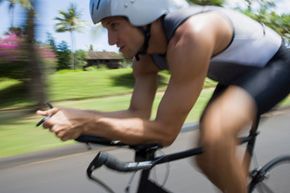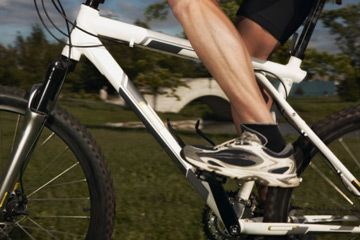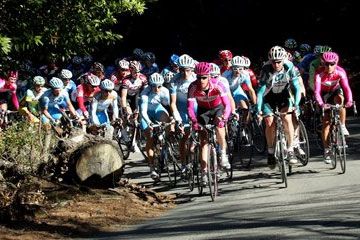You know the expression "it's like riding a bike?" It means once you've learned how to do something, it's hard to ever forget. Unfortunately, the same goes for bad cycling habits.
Mashing refers to a kind of cycling method that many cyclists use, but most training coaches frown upon. It has to do with what's called your cycling cadence, and if you're getting ready for a bike race or need to improve your cycling performance for a triathlon, you'll want to start paying attention to this.
Advertisement
Cadence is to the speed at which you pedal, measured in revolutions per minute (rpm). This, of course, is related to (but not the same as) your bike's speed. A low gear will offer little pedal resistance, but it'll take furious pedaling to go fast. Conversely, a high gear will make the pedals harder to push, but it won't require as many revolutions to attain a high speed.
Pedaling furiously (with a high cadence) on a low gear is called spinning, while pedaling slower (low cadence) on a high gear is called mashing. Both can get you to high speeds -- so why do the best cyclists prefer spinning?
The prevailing theory is that spinning is a more efficient use of your strength and energy. Many cyclists revert to mashing, however, because it feels faster. But, not only does mashing produce more lactic acid, it predominantly uses what's called fast-twitch muscle fibers, which fatigue faster than slow-twitch fibers (used in spinning) [source: Williamson].
The most successful cyclists achieve cadences of 80 to more than 100 rpm for long periods. Some experts maintain, however, that there isn't a one-size-fits all "optimal" cadence, and that you need to find what works best for you [source: Cheung]. And, of course, the appropriate gear at any point in time will always depend on variables such as hills, road conditions and wind.
But if you consciously incorporate spinning into your training, you'll likely become more physically fit and better able to achieve high cadences for long periods of time, just like the pros.
Advertisement


